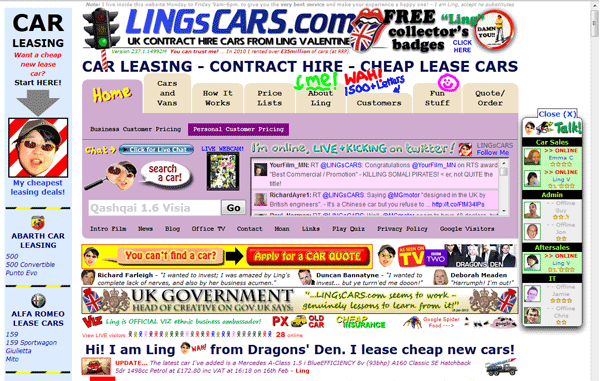Running an eCommerce store is a popular way to run a business. It’s not hard to set up and it’s simple to maintain. All you have to do is sell great products and ship them to people in a timely manner.
Easy, right?
Kind of. It’s certainly true that eCommerce stores are easier to run than, say, shipping companies or marketing agencies. That doesn’t mean that you can cut corners, though. Making just a few common eCommerce mistakes can destroy your chances to make a profit.
1. Failure to satisfy an existing market need
Every business needs to meet some kind of existing need. If you can’t meet a real need, you won’t stay in business very long.
Every product you sell needs to be perfect for some specific market. This concept is known as product-market fit and it’s an essential part of doing business. If you have good product-market fit, it’s much easier to succeed.
To avoid making this mistake, make a list of all the products on your eCommerce store. For each product, ask “will the intended audience really like this product?” If you can’t answer “yes” to this question, or worse, define the intended audience, then drop the product.
This principle applies to the store overall, too. If you’re not meeting a clear market need with your store overall, you need to change the purpose of your store.
2. Unclear marketing funnel
Marketing funnels are a complex concept, but the basics are simple. You need to draw attention, pique interest, create desire for your product, and sell the product. It’s known as a marketing funnel because leads (anyone whose attention you have) go in at the top and a handful pass all the way through the funnel to become customers.
Take each of the four steps above:
- Draw attention.
- Pique interest.
- Create desire.
- Sell the product.
Make sure that your eCommerce store has a clear plan to push people from attention to interest to desire to sales (or action). This is your marketing funnel and it needs to be crystal clear.
3. Cost to acquire new customers is too high
This is kind of a no-brainer, but you need to spend less on new customers than they spend on you. Quadruple-check your eCommerce store’s marketing plan and make sure that you get more money out of customers than you spend to acquire them!
(We briefly touch on this point in our post 20 New Year’s Resolutions for eCommerce Store Owners in 2020 under Resolution #12.)
4. Unclear target market
The world is a big and noisy place. Just to get through a day, you have to ignore an enormous amount of information. As such, people have no reason to pay attention to you if your messages feel irrelevant to them.
For this reason, your store and each product within it need to be made for a specific target market. Write down what your target market for your store, and each product within it, is. This goes hand-in-hand with point 1.
5. Failure to use content or social media marketing
People need to find your store. Otherwise, how will they know about all the great products you’re selling?
While you can drive traffic through advertising alone, it’s a mistake to ignore content marketing and social media marketing. Both of these forms of marketing are great for branding and visibility and they give you a cheaper, longer-lasting way to reach new customers. A few blog articles can go a long way!

6. Poor product descriptions
On the internet, you have precious few seconds to capture a potential buyer’s decision. On a shopping site, there are really only so many ways you can do that: product titles, prices, images, maybe a product demo, and the description.
You might expect people to gloss over product descriptions, but that’s just not how it works. In fact, 87% of people “consider product descriptions extremely important when making a purchasing decision.” That is a staggeringly high figure!
Good product descriptions are specific, interesting, and free from errors. Bonus points if you do some A/B testing with different descriptions to see which ones perform best.
7. Unclear product categories
Imagine walking into a clothing store where different signs point you to different departments. Instead of straightforward descriptions like “Men’s Apparel”, “Women’s Apparel”, or “Children’s Apparel,” imagine the signs have phrases like “Rugged Outdoors”, “Modern Living”, and “Inspired Life.”
You wouldn’t know where to go. Many people would exit the store without making a purchase. This is because customers generally steer clear of anything complicated when purchasing – they’re on a mission and anything that gets in the way is anathema.
Label your product categories clearly and succinctly. It will make your site easy to use and your customers will have a better experience.
8. Low-quality product photos
According to Weebly, “75% of respondents rated product photos as very influential when they’re deciding whether they want to buy a product online.” They then go on to say that “22% of online product returns are because an ‘item looks different than the photos.'”
Needless to say, good product photos are absolutely essential. Good product photos are simple, but show the benefits of the product. They are also honest and straightforward. And, of course, make sure you use a good camera and not your five generation old iPhone!
9. Difficult-to-use navigation
If you have to show someone how to navigate your website, then your navigation is wrong. It’s as simple as that. The menu should be at the top of the page. Each link should have a clear and simple name. Submenus should be avoided if at all possible. You also don’t want any element of your website’s main navigation to do anything that requires additional load time.
10. Crowded/busy website
“When people are confused, they don’t become customers” according to Quick Sprout. It’s the truth and it’s extra important when you’re running an eCommerce store. If your website is crowded, busy, or otherwise confusing, you will lose potential sales very quickly.

11. Unresponsive website design
People have been using mobile devices to browse the internet in massive numbers since the late 2000s and especially since the early 2010s. If your website is only usable on desktop, then everyone who uses a phone or tablet to access your site is much less likely to stick around for long enough to make a purchase. Having a responsive web design is critical!
12. Poor search engine optimization
One of the surest ways to lose potential sales is to rank poorly in search engines. The process of applying technical improvements to your site to improve search rankings is known as search engine optimization or SEO. To apply SEO principles to your website, try running a check on SEO Site Checkup and apply their recommendations.
13. Complex shopping cart
According to Baymard Institute, 69.57% of people will add items to their shopping cart online, and then never make a purchase. This is known as the shopping cart abandonment rate, and it’s a killer for eCommerce stores. If the abandonment rate is too high, a relatively small percentage of people will ultimately buy what you’re selling.
One of the biggest reasons for people abandoning their shopping cart is when the checkout process is too complex. If there are too many clicks, too much text, or if the process as a whole takes too much time, people will simply fail to complete the purchase.
14. Surprising users with hidden fees
Another thing that makes people abandon their shopping carts is hidden fees. If you’ve ever seen a massive upcharge in your cart for shipping, you know exactly what I’m talking about!
Avoid surprising your customers with excessive shipping costs or other hidden fees. If you absolutely have to apply those fees, come up with some promo codes that you can automatically apply to first-time purchases.
15. Not providing return details
Ninety-five percent of customers expect a smooth return experience according to a survey conducted by Narvar. The same survey goes on to say that 82% of survey participants who “had already returned an item to a retailer confirmed they were repeat shoppers of the store.”
The message is clear: customers expect to be able to return their products if they are broken or defective. If you make their experience a good one, you have a chance to win their business once more. Use it wisely!

16. No logo
When making purchases online, the experience is all about speed and simplicity. That means customers won’t spend much time with you. In order to be memorable at all, you need to have clean, clear, consistent branding.
The easiest place to start: spend money on a good logo. Well-designed logos will make your site look more professional and increase the odds that people remember your store.
17. Ignoring privacy and security
In our post on risk mitigation, we point out that cybersecurity risks are some of the most dangerous risks for small businesses. When your entire business operation is based around a website, you need to treat customer information with care. One leak of credit card information could sink your business.
18. Having bad customer service
There are two basic business reasons you need customer service. You want to be able to answer questions so that prospective customers make the purchase and you want to be able to resolve problems if something goes wrong with a product. That is, customer service helps with customer acquisition and customer retention. By extension, bad customer service can deter customers from making repeat purchases or making purchases at all!
19. No reviews or quotes
Anybody can set up a website. That means there’s no way to tell if your product is any good without proof. At a minimum, your product page needs to have quotes from reviewers who have enjoyed your product. Better yet, create a way for users to leave reviews. The more proof that your product is good, the better!
20. Bad shipping and fulfillment experience
In 2017, 63% of customers expected shipping in three days or less. Once life returns to normal after the resolution of the COVID-19 pandemic, this trend of impatience is likely to continue. That means items need to ship quickly and arrive intact. If you are unable to do this by fulfilling your own orders, it’s wise to outsource the responsibility to a company such as Fulfillrite.
Final Thoughts
By taking care to avoid common eCommerce mistakes, you stand a much better chance of running a successful eCommerce store. Tiny tweaks make a huge difference. Take this list and see if you’re committing any of these mistakes and, if you are, commit to doing better tomorrow!





